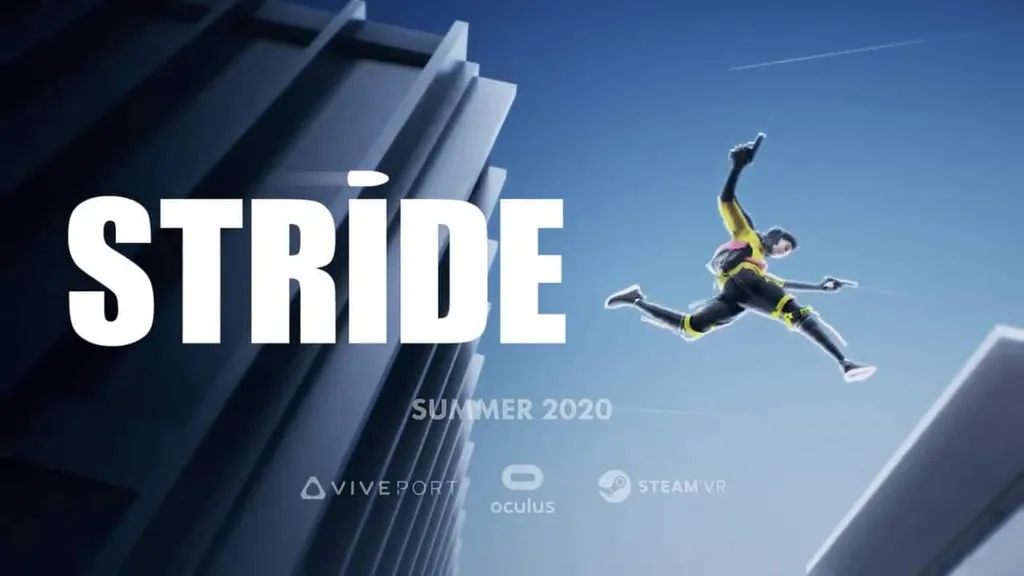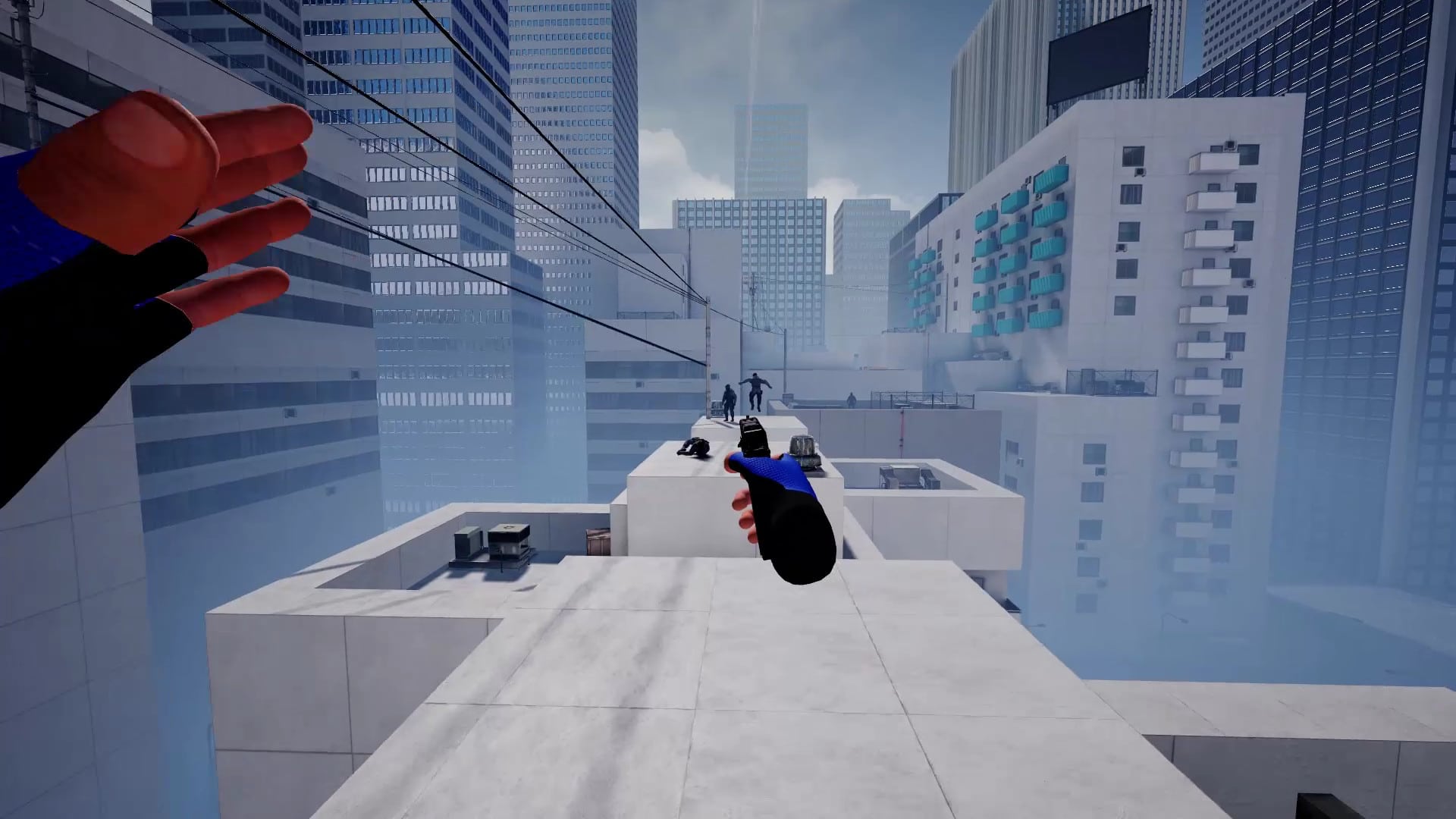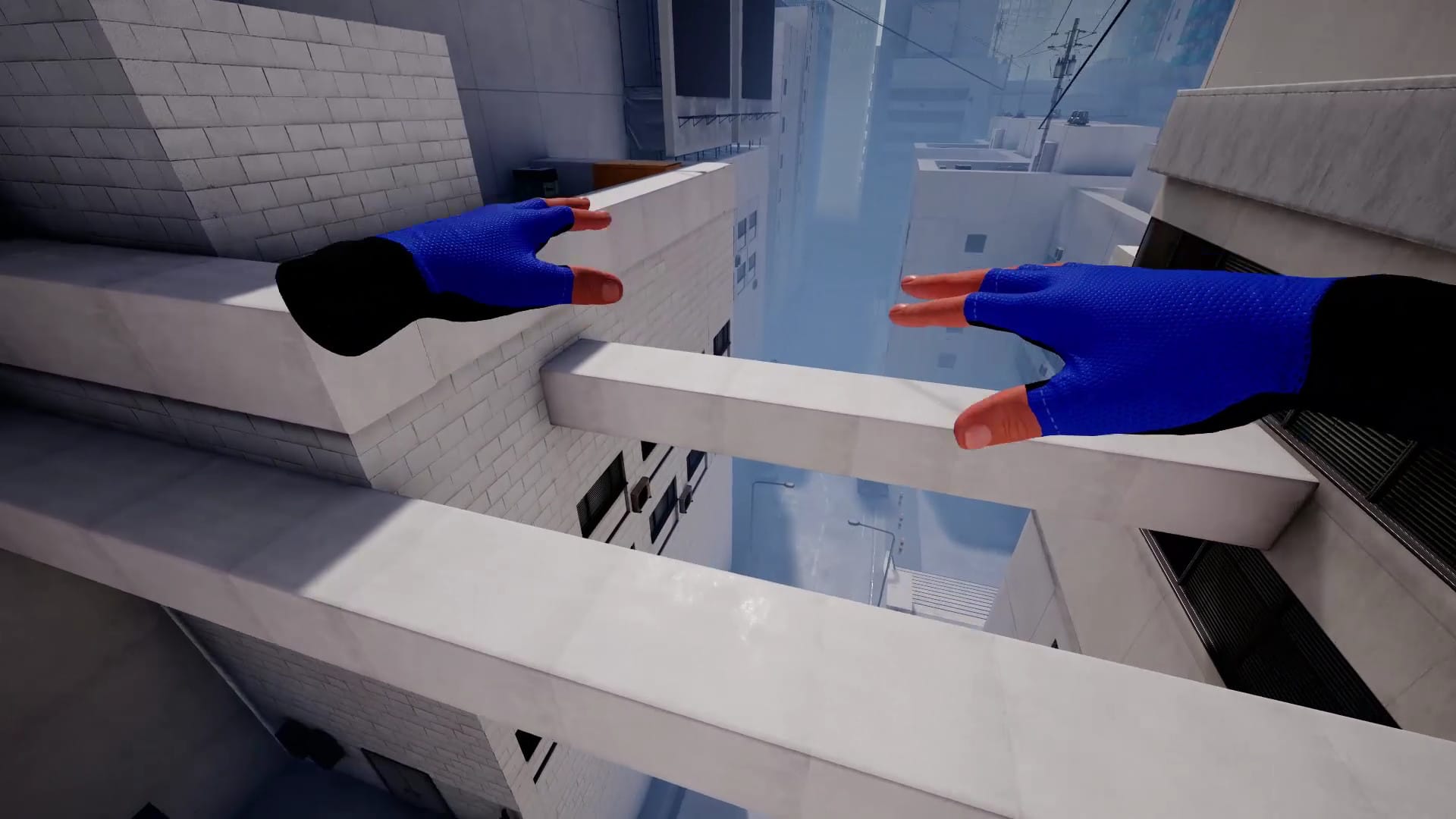Since its announcement earlier this year, Joy Way’s Stride has kept our attention with its Mirror’s Edge-inspired VR gameplay. We wanted to know more about the game, so we spoke to the developer for this Stride interview.
Joy Way CEO Anton Ulishchenko and STRIDE Game Designer Dmitry Khabarov shared a little time with us to talk about the project’s history and its future. Read on to find out all about the game!
Upload: Where did the idea for Stride first come from?
Dmitry Khabarov: I have been a fan of parkour for a long time. I love games like Mirrors Edge, Titanfall, Dying Light and I’ve have been watching STORROR every Monday for several years now (and recently almost every day). I am also a fan of VR, which is why I work in this industry. At some point, my love of VR and parkour united. This happened when I was playing BONEWORKS. I passed the game a long time ago and came back just to run in the sandbox, in which there are many different hills and obstacles that ask you to run over them. But although the movement system there is well made for its own purposes, it is completely unsuitable for parkour. I wondered if there were games that make you feel like a real parkour pro. I tried to find something similar, but it turned out that apart from BONEWORKS and perhaps one arcade mode in Rec Room, nothing has so far come close.
Around the same time, I noticed a post on the Reddit where the user was wondering if it would be possible to make a VR parkour game in the style of the game Mirror’s Edge? At that moment, I realized that I was not the only one, and that most likely there are many people who are waiting for this in VR. Then I looked at all the games I could find which are at least a little close in mechanics to making full-fledged parkour in VR. I realized that almost all the necessary elements had already been implemented in VR games separately, but no one had ever assembled them into one whole before. I wrote down all my thoughts and ideas in a small document, and when the moment came for our team to choose a concept for the next game, I suggested doing something that no one else had done: make real parkour in VR. This is how the development of STRIDE began.
Upload: How much has the project changed since you first revealed it? Are all the features like melee combat still there?
Anton Ulishchenko: After we assembled the prototype, we released a video on cubes in Reddit and received a lot of attention from the community and fans of Mirror’s Edge. We attempted to develop a campaign history style game, but after a vertical cut of the video game and working on the script, it became clear how long the path would be to release and how many resources would be needed to make a complete story.
So, we decided to focus on the main thing, which is the cool movement mechanics. If you master it, it causes flow states, and we wanted to check this by developing an arcade mode and quickly substituting turret bots there. In parallel with this, the second part of the team is working on other bots (stealth, gunfights, movement, close combat). We used the Xsens costume for some animations.
A smarter type of bot with movement will be in the next arena mode, which the second part of the team has been working on from the very beginning of the project. Eventually, we intend to use these bots in story mode. The parkour system has changed a lot and will be polished even more in the future. It has become much easier to use. Flow has improved and there are fewer bugs and problems.
Upload: I felt the jumping in the game could be very hit or miss – are you looking into other inputs for the jump, or fine-tuning what’s there now?
Anton Ulishchenko: At the moment, the jump works in such a way that the player needs to release the button when his hands are moving up and he wants to make a jump. This mechanic takes some getting used to, but it feels great when the player gets used to it.
We want as many players as possible to play the game, not only hardcore gamers. From early testing, we learned that there is a small percentage of people to whom this jump mechanic seems very hard. We’ll stick with the same mechanics for now and see what kind of feedback we get from more players in early access, but in the future we may offer more control choices, including the option to choose a more simplified way of jumping.
Upload: How will the story mode differ from Endless? Will levels still be procedurally generated or be set?
Anton Ulishchenko: The story is more complicated. Since the production of levels and the detail of the graphics are higher, it requires more resources, such as environment artists and various layers of optimization. Of course, the end result certainly looks cooler. We have several ideas for generation, including an open world that we will try in arena mode. Let’s see what kind of feedback we get from that. Afterwards, it will become clearer what to do with the levels where there is a story.
Upload: This definitely feels like a game best suited for Quest; where are you with a potential port to the headset?
Anton Ulishchenko: We really want to get on Quest so we hope that the game will be able to collect a large player base so that Oculus will accept us on the Quest platform. We are also considering an alternative – Sidequest (laughs).
There will be no problems with arcade modes in terms of optimization and graphics. With the story mode, everything is much more complicated in terms of optimization. We think it is easier to make multiplayer, so we are considering this option as an alternative for Quest.
As for multiplayer, warming up players in arcade and arena mode is a suitable option. Players practice in those modes, and when the required number of players are online, the deathmatch will begin.
Stride is available now from SteamVR.




























